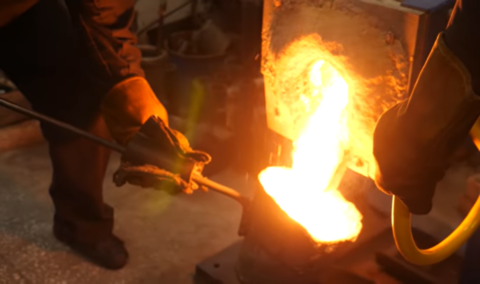A project on integrated processing of industrial waste by SUSU and Teplostroi Engineering Centre provides eco-friendly approach to the disposal of slag from copper smelting enterprises. It is proposed to extract iron from industrial waste and use it for producing wear-resistant cast iron grinding balls and construction fittings; and synthetic basalt, pseudo-wollastonite, pseudo-biofibre from oxide residues. The promising project is being implemented within the framework of the Ural Research and Education Centre.
Pyrometallurgical production of non-ferrous metals is characterized by generation of large amounts of production waste, mostly slag. The integrated use of man-made waste, which includes slag, will help preserve natural resources and protect the environment.
“The disposal of copper smelting waste is an important issue not only in Russia, but around the world as well. In the Chelyabinsk Region alone, over 20 million tons of slag dumps have accumulated at the Karabash Copper-Smelting Plant. At the same time, the production capacity of the Karabash Abrasive Plant, which processes copper smelting waste, amounts to 200-300 thousand tons of slag per year. Thus, it will take about 100 years to completely dispose of the already accumulated volumes of dump slag. And on top of that, Tominsk Mining and Processing Plant is planned to reach full capacity soon in the Chelyabinsk Region, which will significantly increase not only the volume of copper production, but will also generate an even larger amount of copper smelting waste,” says the head of the project Pavel Gamov, Head of the Department of Pyrometallurgical Processes of the SUSU Institute of Engineering and Technology.
.png)
It should be noted that we are only talking about the wastes that are generated during the smelting of blister copper (not taking into account tailings and waste generated at other stages of processing). At the moment, the slag dumps in Karabash occupy an area of over 27 hectares.
Scientists face a task of developing a technology for extracting iron from copper smelting slag and a technology for producing wear-resistant cast iron grinding balls that meet GOST requirements. In addition, it is planned to develop a technology for the production of synthetic basalt, pseudo-wollastonite, and pseudo-biofiber from oxide residues. A pilot line for processing copper smelting slag will be designed at the site of a partner enterprise.
This project will help reduce the volume of storage and generation of copper smelting slag by processing it into cast iron grinding balls and synthetic basalt. This approach will prevent the accumulation of copper in ferrous scrap since cast iron grinding balls are completely worn out during their operation.
.jpg)
In 2023, the project team has conducted a laboratory study to select the conditions for preparation of raw materials, as well as a laboratory study of the process of metallization of agglomerated materials, taking into account the kinetics and maximum degree of metallization of iron.
In 2022, the project received grant support from the Government of the Chelyabinsk Region. The project also implies financing from the industrial partner’s own funds.
The Ural Research and Education Centre for Advanced Industrial Technologies and Materials was created within the framework of the Science and Universities national project to conduct world-class applied scientific research and development. The centre is involved in obtaining competitive technologies and products, their commercialization, as well as in personnel training. Leading universities from the Sverdlovsk, Chelyabinsk and Kurgan regions, such as UrFU, SUSU, KSU and others, actively participate in the development of the UIREC.




